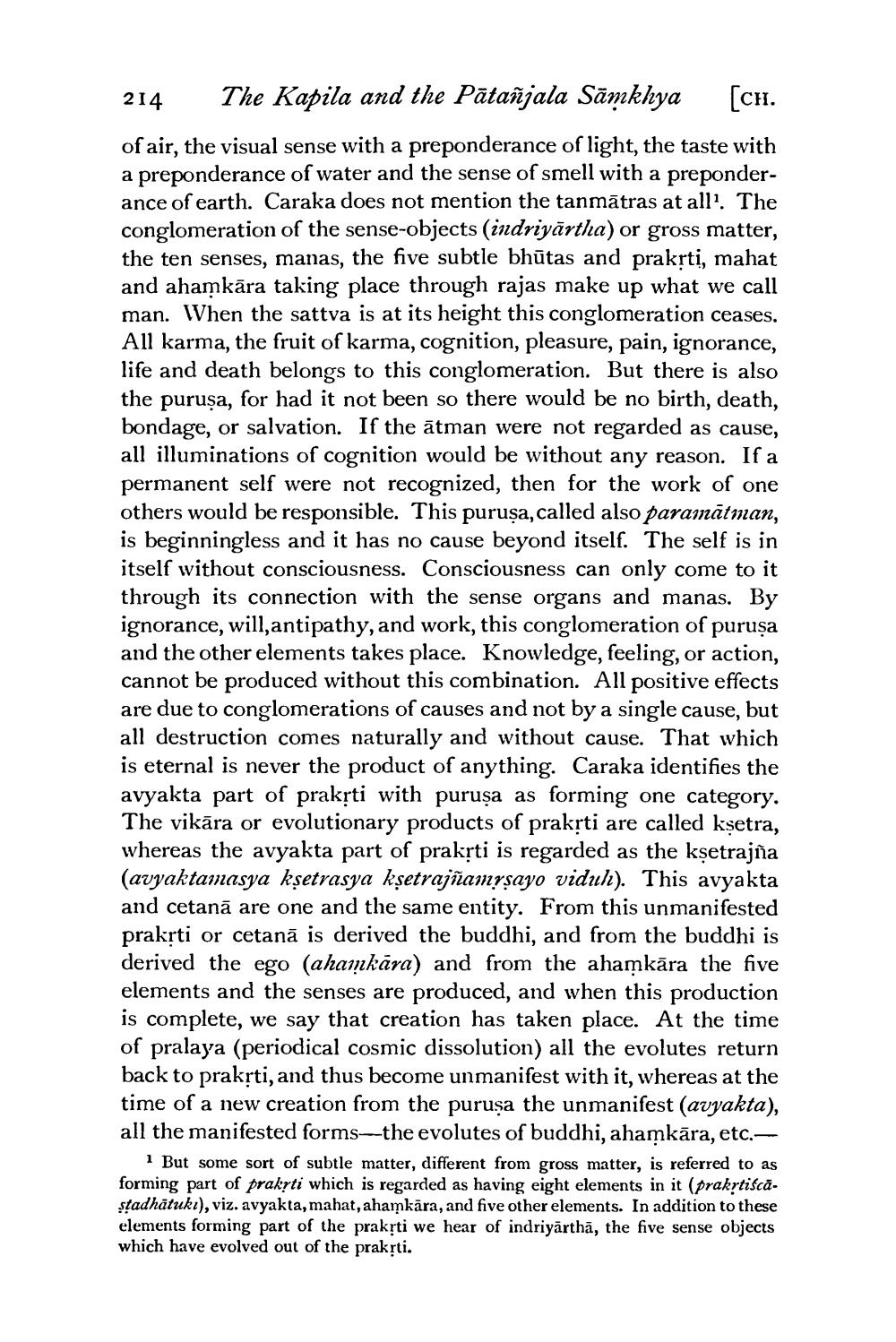________________
214
The Kapila and the Patanjala Samkhya
[CH.
of air, the visual sense with a preponderance of light, the taste with a preponderance of water and the sense of smell with a preponderance of earth. Caraka does not mention the tanmātras at all1. The conglomeration of the sense-objects (indriyārtha) or gross matter, the ten senses, manas, the five subtle bhūtas and prakṛti, mahat and ahamkāra taking place through rajas make up what we call man. When the sattva is at its height this conglomeration ceases. All karma, the fruit of karma, cognition, pleasure, pain, ignorance, life and death belongs to this conglomeration. But there is also the purusa, for had it not been so there would be no birth, death, bondage, or salvation. If the ātman were not regarded as cause, all illuminations of cognition would be without any reason. If a permanent self were not recognized, then for the work of one others would be responsible. This purusa, called also paramātman, is beginningless and it has no cause beyond itself. The self is in itself without consciousness. Consciousness can only come to it through its connection with the sense organs and manas. By ignorance, will, antipathy, and work, this conglomeration of purusa and the other elements takes place. Knowledge, feeling, or action, cannot be produced without this combination. All positive effects are due to conglomerations of causes and not by a single cause, but all destruction comes naturally and without cause. That which is eternal is never the product of anything. Caraka identifies the avyakta part of prakṛti with purusa as forming one category. The vikara or evolutionary products of prakṛti are called kṣetra, whereas the avyakta part of prakṛti is regarded as the kṣetrajña (avyaktamasya kṣetrasya kṣetrajñamṛṣayo viduh). This avyakta and cetana are one and the same entity. From this unmanifested prakrti or cetana is derived the buddhi, and from the buddhi is derived the ego (ahamkāra) and from the ahamkāra the five elements and the senses are produced, and when this production is complete, we say that creation has taken place. At the time of pralaya (periodical cosmic dissolution) all the evolutes return back to prakṛti, and thus become unmanifest with it, whereas at the time of a new creation from the purusa the unmanifest (avyakta), all the manifested forms-the evolutes of buddhi, ahamkara, etc.
1 But some sort of subtle matter, different from gross matter, is referred to as forming part of prakyti which is regarded as having eight elements in it (prakṛtiścăstadhätuki), viz. avyakta, mahat, ahamkāra, and five other elements. In addition to these elements forming part of the prakṛti we hear of indriyärtha, the five sense objects which have evolved out of the prakṛti.




